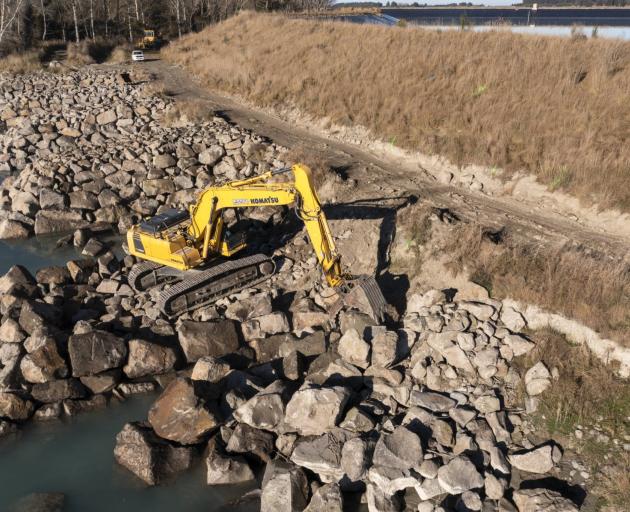

In May 2021, heavy rainfall caused widespread flooding and prompted a region-wide state of emergency.
The flooding caused extensive damage to homes, businesses, and critical infrastructure such as stopbanks, riverbanks, and flood protection vegetation.
The regional council has carried out $22.6 million worth of work, with the National Emergency Management Agency contributing around $8.3m.
Environment Canterbury regional lead river engineering Shaun McCracken said the council initially focused on identifying damaged infrastructure across the region and prioritised design repairs for each site.
The initial goal was to restore the resilience, but on some sites, engineers were able to mitigate the increasing challenges posed by climate change, he said.
This included developing the ‘‘room for rivers’’ concept, which reduces pressure on flood protection assets and provides for a healthier waterway, he said.
Environment Canterbury has completed more than 400 individual repair jobs across the region, including fixing more than 5kms of stopbanks and planting more than 60,000 native and exotic trees.
Mr McCracken said erosion and scour protection was also completed, rock protection was used on riverbanks in more constrained areas, such the Geraldine township.
Some sites remain vulnerable and will continue to be closely monitored, he said.

Councillor Ian Mackenzie said the project's completion was a significant milestone for the council.
‘‘This achievement not only protects our residents, but also ensures the long-term sustainability of our infrastructure."
Environment Canterbury is planning to invest $25 million a year, over the next 10 years, to boost flood protection as part of the 2024/34 Long Term Plan.
A targeted rate has been introduced for further flood protection work in the Selwyn district, while targeted rates are being considered for the Ashley-Rakahuri River at Rangiora and for rivers in South Canterbury.
By David Hill, Local Democracy Reporter
■ LDR is local body journalism co-funded by RNZ and NZ On Air.













